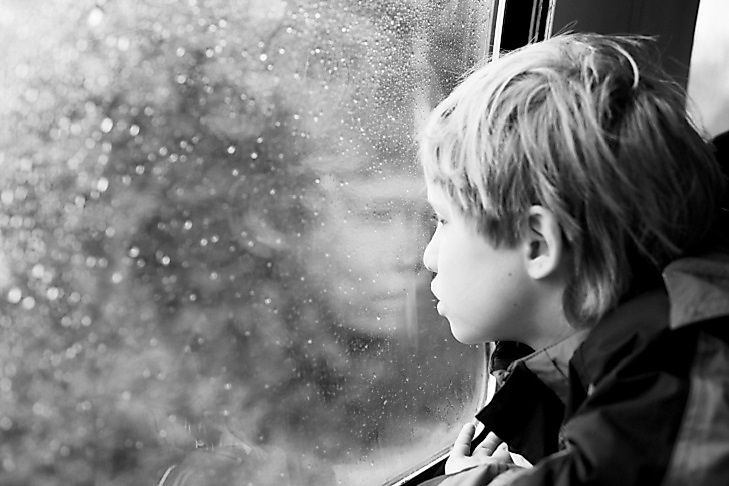Autism Rates Around the World

Studies conducted on those with autism show that it affects more boys than girls, and is most prevalent in developed countries. Autism diagnosis occurs across different age groups, though studies also indicate that autism is likely already present at the time of birth, although it is very difficult to form an early diagnosis.
Autism ranges from causing mild symptoms to more obvious abnormal behaviors associated with the condition. Unfortunately, no known cure has been found to alleviate this condition to date. Today, the cases of autism seen in adults and children are still rising. Experts who have been studying the condition have no explanation as to why it is so much more prevalent than before. There are those that believe that autism is caused by unexplained environmental conditions, although the recent rise in autism has also been attributed by increased awareness and effective diagnostic methods specific to the condition.
10. Portugal (9.2 in 10,000)
Portugal has conducted its own recent research on autism, in a study involving 332,808 school-aged children. It found that the prevalence of the disorder was 9.2 per 10,000 children, with the disorder often being detected alongside other associated medical conditions, such as respiratory disorders. An additional study was done in the Portuguese Azores Islands, and the data there indicated a rate 15.6 autistic children per 10,000 children.
9. Brazil (27.2 in 10,000)
Brazil's Ministry of Health has published a guideline on the care of individuals with the disorder following studies showing the high rates of autism among young Brazilians. The disorder was recognized by federal law as a disability, and those with it are entitled to social benefits. However, there has been some deal of confusion and disagreement over the relationship between health, rights, and citizenship in Brazil. Statistics suggest that there are about1.5 million people with autism who live in Brazil today.
8. Hong Kong, SAR of China (49 in 10,000)
According to the Autism Partnership, the Hong Kong SAR of China has an autism rate of 49 for every 10,000. The government of Hong Kong suggests that there are about 3,800 residents with the disorder in their jurisdiction. In Hong Kong, among its student population, less than one percent are affected with the disorder. One autistic charity organization in the city of Hong Kong helps autistic children by providing therapy, although similar organizations have found it difficult to exist there because of a lack of government support.
7. Australia (66.6 in 10,000)
Australian studies on autism have found that the increases in autism cases in the country were not really as pronounced as researchers in many other developed countries have led people to believe. They felt there was just a case of the general populace and medical practitioners alike having more autism awareness, in addition to better diagnostic tools to identify the disorder in its milder forms. The Australian government has granted support for those families with children with formal autism diagnosis n the form of "Carer Allowances". The rate is around 66.6 according to the Australian Institute of Health and Welfare.
6. Denmark (68.5 in 10,000)
Denmark made a study on autism as well, and had some problems with regards to determining what really caused the disorder. The results remain inconclusive. In Denmark, there has been a call for more government resources and organizations to help those affected by autism. The rate of autism in Denmark is 68.5 per 10,000 according to the US National Library of Medicine National Institutes of Health.
5. ireland (100 in 10,000)
France has an autism rate of around 100 per 10,000, according to a study conducted by Dublin City University. This rate is similar to other developed countries such as the United States and the United Kingdom. Again, like other entries on this list, it has been difficult to pinpoint an exact number of children who are affected by autism as diagnosis is complex.
4. United Kingdom (100 in 10,000)
The United Kingdom reports around 1 cases of autism spectrum conditions per 100 children according to the NHS. Like many other places in the world, nearly five times as many males are diagnosed with autism compared to females. However, it is possible that autism is under-diagnosed in females.
3. Canada (152 in 10,000)
Canada has conducted its own autism studies by way of the Public Health Agency of Canada, which found that the rate is 152 per 10,000. The Agency found that there was no correlation at all between autism and the MMR (mumps, measles, and rubella) vaccine. They found that after the introduction of the MMR vaccine, no increase of autism was detected.
2. Japan (161 in 10,000)
Japan has a rate of up to 161 autism cases per 10,000 according to the New Scientist. Although Japan reportedly has the highest incidence of autism in the world, with 161 cases per every 10,000 people, it is hard to pinpoint whether autism is actually more common there or if it is just merely reported more often. Controversy over whether or not the MMR (measles, mumps, rubella) vaccine could be linked to autism was widespread in Japan in the 1990s and 2000s. This led to the government dropping the requirement for MMR vaccination. However, rates of autism did not decrease despite the lack of vaccination, showing a lack of correlation between the two.
1. USA - (168 in 10,000)
The United States' data on autism recently showed that 168 in 10,000 American children have the disorder, according to Center for Disease Control findings. It is, however, unclear whether or not autism rates have actually increases or detection has just grown.











